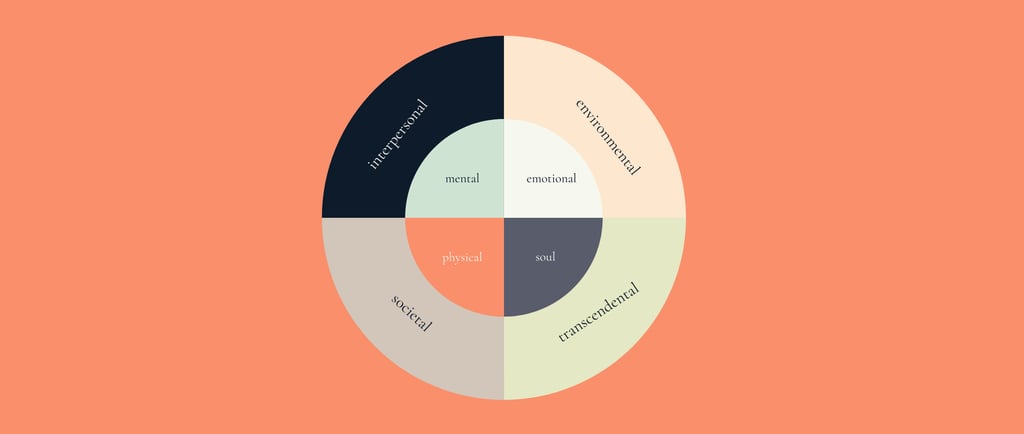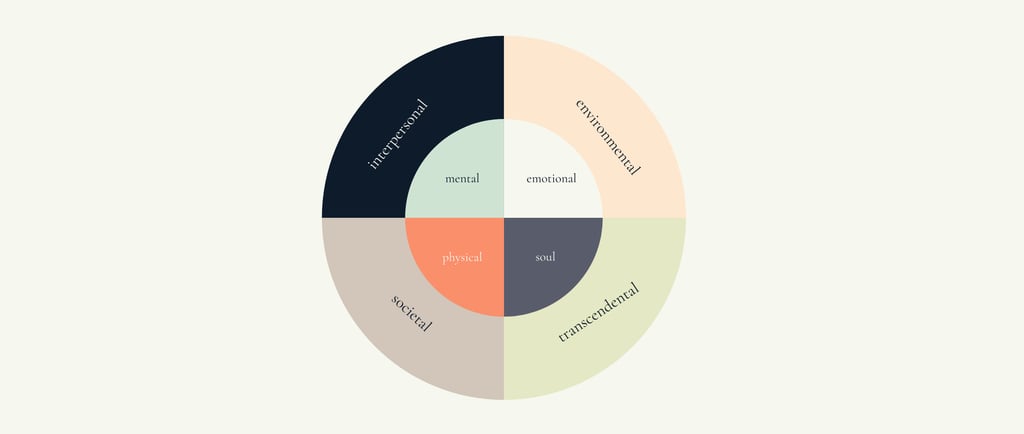The Peaceful Path
How Inner Peace And The 8 Dimensions of Inner Peace Can Change Our World
THE DIMENSIONS OF INNER PEACE
Julia Dencker
1/1/20243 min read


Welcome to
The Peaceful Path
Welcome to our blog! Today we dive into the fascinating world of inner peace and its profound impact on our lives, our societies and the world at large. This article is based on the first episode of "The Peaceful Path Podcast" and offers additional innovative ideas, practical examples and further reading to support your path to inner and outer peace.
My personal journey to inner peace
As a peace and conflict researcher with over five years of intensive work in this field, I have travelled a path of inner conflict. This journey has taught me the importance of finding inner peace in order to create sustainable peace in the world. So, I found what many found who came before me. Our quest for global peace begins within ourselves.
So, what are we waiting for then?
Since I felt very lost and helpless on this lonely path, I have developed various peacebuilding and conflict resolution programs and products based on the 8 Dimensions of Inner Peace. These offerings provide theoretical knowledge as well as practical tools and ongoing support to transform your understanding of conflict and enable you to live in peace. Learn more and register.
The dimensions of inner peace
During my graduate work in Peace and Conflict Studies, I identified four inner and four outer dimensions of inner peace:
Inner dimensions:
Mental peace
Emotional peace
Physical peace
Spiritual peace/peace of soul
Outer dimensions:
Interpersonal peace
Environmental peace
Societal peace
Transcendental peace
These dimensions are not just theoretical constructs, but practical tools that can promote peace within ourselves and let it radiate outwards.
Why is inner peace important for world peace?
Inner peace is the foundation for a peaceful world. When individuals find peace within themselves, they are better able to deal constructively with conflict and act more empathetically and compassionately. This has a profound impact on interpersonal relationships, communities and ultimately entire societies.
Peaceful people help to promote a culture of peace by bringing positive values and behaviours into their environment. This can lead to a cascade of positive changes that reach far beyond the individual. A person who cultivates inner peace can serve as a role model and inspire others to follow the same path. This creates a network of peacemakers that forms a strong basis for global peace.
Peaceful approaches from around the world
Here are some innovative approaches and examples from different cultures that can help us find inner peace:
Ikigai: This concept means "ground of being" and helps people live a fulfilling life by finding what they truly love and are good at. A daily journal can help you focus on what's really important. Check out the 8 Dimensions of Peace Journal here.
ubuntu: Ubuntu means "I am because we are" and emphasizes community and togetherness. This can be promoted through regular peace circles or community projects in your neighbourhood. To organize such circles, you can use platforms like Riverside.fm to organize and host virtual meetings.
Forest bathing: Shinrin-yoku (Japanese) or "forest bathing" is a practice of spending time in nature to relieve stress and calm the mind. Try to spend time in the forest or a park regularly. If you need inspiration, you can find a guide to forest bathing on Amazon.
Practical tips and everyday exercises
To promote inner peace in your everyday life, here are some practical exercises:
Daily meditation: start and end your day with 10-15 minutes of meditation to calm your mind and gain clarity.
Gratitude diary: Write down three things you are grateful for every evening. This helps to promote positive thought patterns.
Mindfulness exercises: Incorporate small mindfulness exercises into your day, such as conscious breathing or mindful eating. An app like Calm can help you to integrate mindfulness into your everyday life.
Further readings
For those who want to delve deeper into the topic of inner peace, I recommend the following books:
- "Being Peace" by Thich Nhat Hanh
- "Radical Acceptance" by Tara Brach
- "The Art of Peace" by Morihei Ueshiba
Final thoughts
Remember, every journey begins with a single step. I look forward to walking this path with you. May your path be filled with calm, love, peace and understanding.


Get in touch
Contacts
Julia Dencker - The Peaceful Path
contact@the-peaceful-path.com


